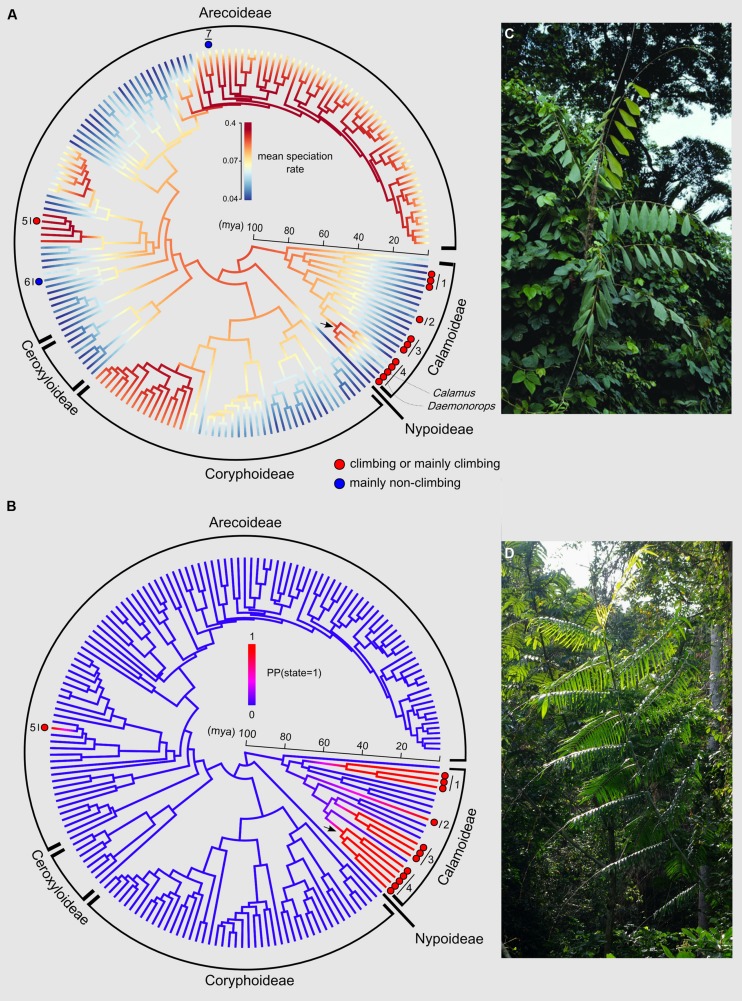FIGURE 4.
Evolutionary history of the climbing habit in palms. (A) Phylorate plot of the mean diversification rates sampled from the posterior (red = high diversification rates; blue = low diversification rates) resulting from the BAMM output using the dated generic-level chronogram (Couvreur et al., 2011a) in millions of years ago (mya). Each terminal branch represents a genus. The figure also shows the phylogenetic distribution of genera that include climbing species either containing entirely or mainly climbing species (red circles) or mainly non-climbing species (one or two species of climbers, blue circles). All other non highlighted genera are strictly non-climbers. The arrow indicates the crown node of subtribe Calaminae. Numbers refer to subtribes or genera (1: Ancistrophyllinae; 2: Korthalsiinae (Korthalsia); 3: Plectocomiinae; 4: Calaminae; 5: Desmoncus; 6: Chamaedorea; 7: Dypsis. (B) DensityMap plot of the posterior probabilities (PP) of state 1 (climbing, blue) vs. state 0 (non-climbing, red) along branches based on 10,000 generations using SIMMAP. The arrow indicates the crown node of subtribe Calaminae. The five state changes from non-climbing to climbing are represented by a change in color from blue to red. Photos illustrate typical climbing palms: (C) Korthalsia zippelii from Papua New Guinea (Photo: William J. Baker, www.palmweb.org), and (D) Laccosperma robustum, a frequent species throughout Central Africa (Photo: Thomas L. P. Couvreur, www.palms.myspecies.info).

